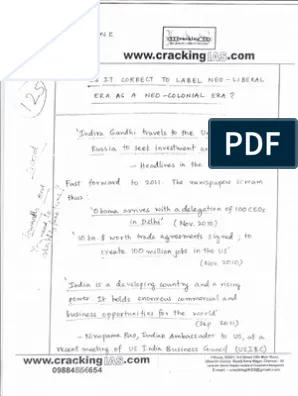- Home
- Prelims
- Mains
- Current Affairs
- Study Materials
- Test Series
 EDITORIALS & ARTICLES
EDITORIALS & ARTICLES
Feb 1st, 2022 - Daily Quiz
1. Consider the following statements regarding the recent Economic survey of India.
 Current Account
The current account is used to monitor the inflow and outflow of goods and services between countries. This account covers all the receipts and payments made with respect to raw materials and manufactured goods.
It also includes receipts from engineering, tourism, transportation, business services, stocks, and royalties from patents and copyrights. When all the goods and services are combined, together they make up to a country’s Balance Of Trade (BOT).
There are various categories of trade and transfers which happen across countries. It could be visible or invisible trading, unilateral transfers or other payments/receipts. Trading in goods between countries are referred to as visible items and import/export of services (banking, information technology etc) are referred to as invisible items.
Unilateral transfers refer to money sent as gifts or donations to residents of foreign countries. This can also be personal transfers like – money sent by relatives to their family located in another country.
Capital Account
All capital transactions between the countries are monitored through the capital account. Capital transactions include the purchase and sale of assets (non-financial) like land and properties.
The capital account also includes the flow of taxes, purchase and sale of fixed assets etc by migrants moving out/into a different country. The deficit or surplus in the current account is managed through the finance from the capital account and vice versa. There are 3 major elements of a capital account:
Loans and borrowings – It includes all types of loans from both the private and public sectors located in foreign countries.
Investments – These are funds invested in the corporate stocks by non-residents.
Foreign exchange reserves – Foreign exchange reserves held by the central bank of a country to monitor and control the exchange rate does impact the capital account.
Financial Account
The flow of funds from and to foreign countries through various investments in real estates, business ventures, foreign direct investments etc is monitored through the financial account. This account measures the changes in the foreign ownership of domestic assets and domestic ownership of foreign assets. On analyzing these changes, it can be understood if the country is selling or acquiring more assets (like gold, stocks, equity etc).
What is the importance of the Balance of Payments in India?
The importance of the balance of payment in India can be determined from the following points:
Current Account
The current account is used to monitor the inflow and outflow of goods and services between countries. This account covers all the receipts and payments made with respect to raw materials and manufactured goods.
It also includes receipts from engineering, tourism, transportation, business services, stocks, and royalties from patents and copyrights. When all the goods and services are combined, together they make up to a country’s Balance Of Trade (BOT).
There are various categories of trade and transfers which happen across countries. It could be visible or invisible trading, unilateral transfers or other payments/receipts. Trading in goods between countries are referred to as visible items and import/export of services (banking, information technology etc) are referred to as invisible items.
Unilateral transfers refer to money sent as gifts or donations to residents of foreign countries. This can also be personal transfers like – money sent by relatives to their family located in another country.
Capital Account
All capital transactions between the countries are monitored through the capital account. Capital transactions include the purchase and sale of assets (non-financial) like land and properties.
The capital account also includes the flow of taxes, purchase and sale of fixed assets etc by migrants moving out/into a different country. The deficit or surplus in the current account is managed through the finance from the capital account and vice versa. There are 3 major elements of a capital account:
Loans and borrowings – It includes all types of loans from both the private and public sectors located in foreign countries.
Investments – These are funds invested in the corporate stocks by non-residents.
Foreign exchange reserves – Foreign exchange reserves held by the central bank of a country to monitor and control the exchange rate does impact the capital account.
Financial Account
The flow of funds from and to foreign countries through various investments in real estates, business ventures, foreign direct investments etc is monitored through the financial account. This account measures the changes in the foreign ownership of domestic assets and domestic ownership of foreign assets. On analyzing these changes, it can be understood if the country is selling or acquiring more assets (like gold, stocks, equity etc).
What is the importance of the Balance of Payments in India?
The importance of the balance of payment in India can be determined from the following points:
- It shows that the service sector was the worst hit sector by the COVID-19 pandemic.
- The private consumption has not yet recovered fully form the pandemic till Financial year 2021.
- India's balance of payment remained negative in the last two years.
- The balance of payments of a country is the difference between all money flowing into the country in a particular period of time and the outflow of money to the rest of the world.
- Current account deficit refers to the net outflow of money in terms of exports and imports of both goods and services and transfer payments.
- Trade deficit is the situation when a country's imports exceeds exports.
- Despite all the disruptions caused by the global pandemic, India’s balance of payments remained in surplus throughout the last two years.
- Reserve Bank of India accumulated foreign exchange reserves, which is equivalent to 13.2 months of imports and higher than the country’s external debt.
- deregulation of certain sectors
- simplification of processes
- removal of legacy issues like ‘retrospective tax’
- production-linked incentives
- privatization
- The BOP of a country reveals its financial and economic status.
- A BOP statement can be used as an indicator to determine whether the country’s currency value is appreciating or depreciating.
- The BOP statement helps the Government to decide on fiscal and trade policies.
- It provides important information to analyze and understand the economic dealings of a country with other countries.
 Current Account
The current account is used to monitor the inflow and outflow of goods and services between countries. This account covers all the receipts and payments made with respect to raw materials and manufactured goods.
It also includes receipts from engineering, tourism, transportation, business services, stocks, and royalties from patents and copyrights. When all the goods and services are combined, together they make up to a country’s Balance Of Trade (BOT).
There are various categories of trade and transfers which happen across countries. It could be visible or invisible trading, unilateral transfers or other payments/receipts. Trading in goods between countries are referred to as visible items and import/export of services (banking, information technology etc) are referred to as invisible items.
Unilateral transfers refer to money sent as gifts or donations to residents of foreign countries. This can also be personal transfers like – money sent by relatives to their family located in another country.
Capital Account
All capital transactions between the countries are monitored through the capital account. Capital transactions include the purchase and sale of assets (non-financial) like land and properties.
The capital account also includes the flow of taxes, purchase and sale of fixed assets etc by migrants moving out/into a different country. The deficit or surplus in the current account is managed through the finance from the capital account and vice versa. There are 3 major elements of a capital account:
Loans and borrowings – It includes all types of loans from both the private and public sectors located in foreign countries.
Investments – These are funds invested in the corporate stocks by non-residents.
Foreign exchange reserves – Foreign exchange reserves held by the central bank of a country to monitor and control the exchange rate does impact the capital account.
Financial Account
The flow of funds from and to foreign countries through various investments in real estates, business ventures, foreign direct investments etc is monitored through the financial account. This account measures the changes in the foreign ownership of domestic assets and domestic ownership of foreign assets. On analyzing these changes, it can be understood if the country is selling or acquiring more assets (like gold, stocks, equity etc).
What is the importance of the Balance of Payments in India?
The importance of the balance of payment in India can be determined from the following points:
Current Account
The current account is used to monitor the inflow and outflow of goods and services between countries. This account covers all the receipts and payments made with respect to raw materials and manufactured goods.
It also includes receipts from engineering, tourism, transportation, business services, stocks, and royalties from patents and copyrights. When all the goods and services are combined, together they make up to a country’s Balance Of Trade (BOT).
There are various categories of trade and transfers which happen across countries. It could be visible or invisible trading, unilateral transfers or other payments/receipts. Trading in goods between countries are referred to as visible items and import/export of services (banking, information technology etc) are referred to as invisible items.
Unilateral transfers refer to money sent as gifts or donations to residents of foreign countries. This can also be personal transfers like – money sent by relatives to their family located in another country.
Capital Account
All capital transactions between the countries are monitored through the capital account. Capital transactions include the purchase and sale of assets (non-financial) like land and properties.
The capital account also includes the flow of taxes, purchase and sale of fixed assets etc by migrants moving out/into a different country. The deficit or surplus in the current account is managed through the finance from the capital account and vice versa. There are 3 major elements of a capital account:
Loans and borrowings – It includes all types of loans from both the private and public sectors located in foreign countries.
Investments – These are funds invested in the corporate stocks by non-residents.
Foreign exchange reserves – Foreign exchange reserves held by the central bank of a country to monitor and control the exchange rate does impact the capital account.
Financial Account
The flow of funds from and to foreign countries through various investments in real estates, business ventures, foreign direct investments etc is monitored through the financial account. This account measures the changes in the foreign ownership of domestic assets and domestic ownership of foreign assets. On analyzing these changes, it can be understood if the country is selling or acquiring more assets (like gold, stocks, equity etc).
What is the importance of the Balance of Payments in India?
The importance of the balance of payment in India can be determined from the following points:
- It monitors the transaction of all the imports and exports of services and goods for a given period
- It helps the government analyse a particular industry export growth potential and formulate policy to sustain it
- It gives the government a comprehensive perspective on a different range of import and export tariffs. The government then increases and decreases the tax to discourage import and encourage export, individually, and be self-sufficient
- Purchase of goods and services by foreigners
- Foreign Direct Investment (FDI) into our country
- Inflow by the NRIs settled in foreign countries
- Speculative purchase of home currency by foreigners









 Latest News
Latest News General Studies
General Studies